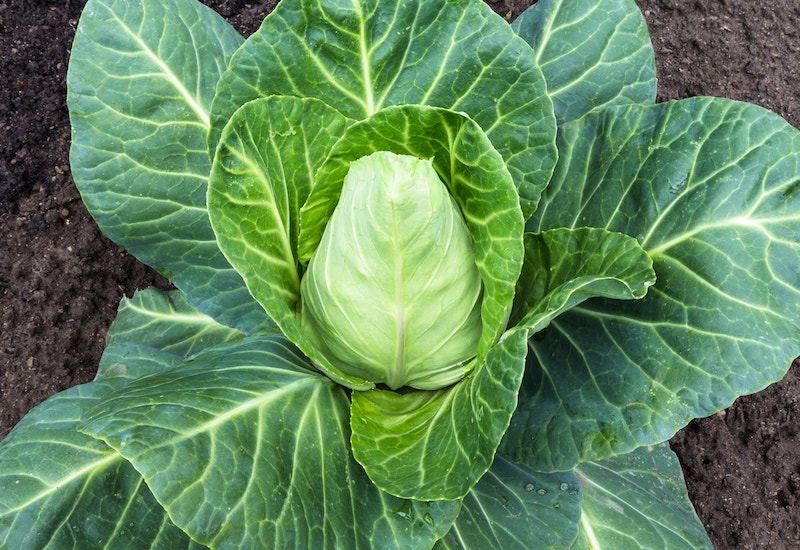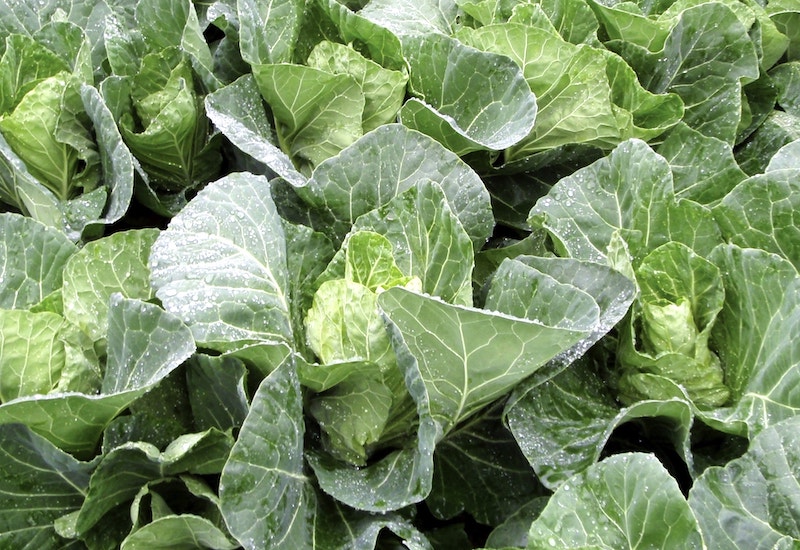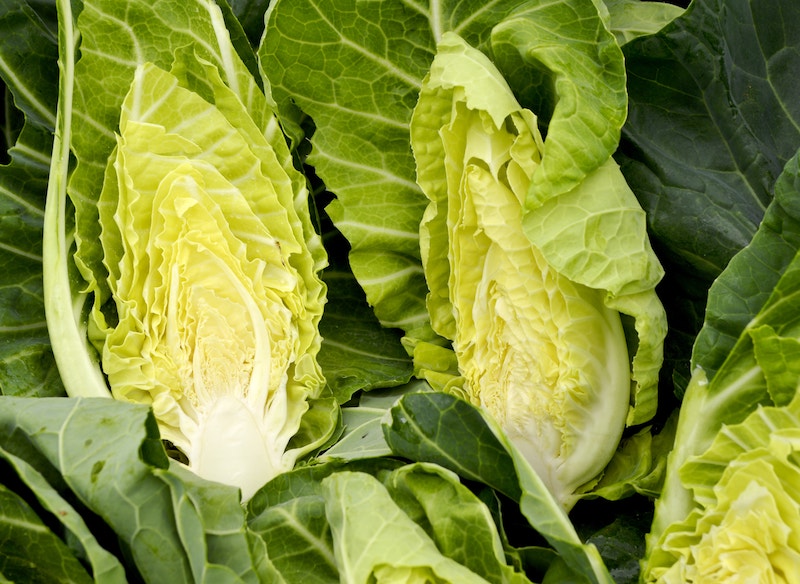Methods to develop cabbages – Suttons Gardening Develop How
Cabbage is among the most versatile greens on the allotment. From crispy coleslaws to scorching stir fries and hearty stews, there are limitless methods to place this basic crop to good use. And, relying on the varieties you select, you could possibly be harvesting these leafy greens all 12 months spherical. Right here, skilled allotment grower Lee Senior shares sensible recommendation on the way to develop cabbages from seed.
Wish to give it a go? Browse our full vary of cabbage seeds.
How to decide on one of the best cabbage varieties to develop
Cabbage is available in inexperienced, crimson and white, and there are totally different varieties for every season. Inexperienced is the preferred, whereas crimson cabbage is totally different to the others and is especially grown over the summer time months within the UK. With just a little planning and successional sowing, it’s potential to be self-sufficient in cabbages for twelve months of the 12 months. Nonetheless, if house is proscribed, simply give attention to rising your favorite kind.
Cabbages are grouped by their harvest occasions:
- Spring cabbages are sown in late summer time throughout July and August. They have an inclination to have pointed hearts however there are round-headed varieties too. They overwinter in your allotment (normally with out safety) till harvesting in April and Might, occupying the bottom for as much as 9 months. My favorite spring cabbage is F1 ‘Winterjewel’ – a tricky overwintering pointed cabbage that doubles up to be used as spring greens, but additionally kinds a free coronary heart.
- Summer season cabbages are sown in early spring and may be round-headed or pointed. The favored pointed sorts are faster to mature and are a good selection for the primary cabbage sowings of the brand new 12 months. My favorite summer time selection is the ultra-reliable ‘Greyhound’. The identify is a clue as to how briskly it grows when pleased! This fine-tasting cabbage has a good however comparatively small pointed head that’s splendid for utilizing in a single meal, lowering waste. It may be sown over a protracted season from February via to the top of June, with later sowings producing very wonderful cabbages in early autumn. One other favorite is ‘Golden Acre Primo’. I first grew this medium-sized spherical head selection as a scholar again within the Nineteen Nineties and I’ve been rising it ever since. It’s ultra-reliable, has good flavour and is a no-frills cabbage that simply will get on with the job!
- Autumn cabbages are sown in late spring till late Might. They are often harvested between mid-August and early-December offering a lot wanted continuity between the final of the summer time harvest and the winter-cropping varieties. I actually like F1 ‘Kilazol’ for autumn use. It is a white round-head kind which may be sown between March and Might and is prepared for harvest between September and late November. In fertile soil it produces good-sized heads, from 1.5-2.5kg. The crops stand effectively when mature earlier than they bolt and likewise retailer effectively within the fridge. This storing functionality is to not be underestimated, as it might assist keep away from a glut when late-summer varieties mature. Lastly, if the entire above isn’t sufficient, ‘Kilazol’ has glorious clubroot resistance too!
- Winter cabbages are sown throughout late Might and early June and are a lot slower rising. They’re very immune to chilly climate and retailer within the floor remarkably effectively earlier than harvesting. Additionally they retailer effectively for quite a few weeks in a fridge or cellar or storage. Most varieties are prepared from November via to early April, offering recent meals at a time when different issues are in brief provide.
- If crimson cabbage is your factor, then my sorts of alternative are ‘Pretino’ and the better-known ‘Crimson Drumhead’. Crimson cabbage isn’t usually as hardy as different sorts, however ‘Crimson Drumhead’ may be overwintered in a chilly body from an August sowing and planted out in March. Crimson varieties retailer effectively for a number of weeks when harvested, both in a fridge, cellar or chilly outbuilding.
Methods to sow cabbage seeds

Picture: Cabbage ‘Greyhound’ from Suttons
Cabbage seeds germinate in temperatures between 10C (50F) and 18C (64F) making them splendid for sowing early within the season. Summer season cabbages may be sown as early as the start of February in a heated propagator or a heat windowsill. Right here’s how:
- Sow the seed in trays of compost and really flippantly cowl with compost or perlite.
- As quickly as germination has taken place, take away the seedlings from the propagator or windowsill and put them in an unheated greenhouse or chilly body to cut back the chance of them turning into leggy. A chilly body that isn’t in full solar all day is right.
- Transplant the seedlings into small 7.5cm (3 inch) pots after they acquire their true leaves.
- Defend the seedlings from an excessive amount of direct daylight and warmth whereas below glass. The younger crops can turn into scorched or broken by an excessive amount of sunshine.
- Develop them on until they’ve 4-6 true leaves and a powerful root system.
- Harden them off earlier than they turn into too pot sure.
From April till late July, cabbage seeds may be sown instantly outdoors right into a finely raked, ready seedbed.
Make a shallow seed drill 1.5cm deep and add a skinny layer of multi-purpose compost earlier than sowing the seed on high. Cowl with extra compost or wonderful soil and gently agency. Make sure the drill is moist earlier than sowing, pre-watering it if crucial. This methodology frees up important house within the greenhouse and is a greater possibility than below glass as temperatures rise. It additionally means you gained’t have to harden off your crops, and they are often transplanted straight into their remaining rising positions after they’re prepared.
When and the place to plant out cabbages

Picture: Cabbage F1 ‘Winterjewel’ from Suttons
Plant out your summer time cabbages firmly into soil containing loads of effectively rotted natural matter. Select a sunny location away from fences and hedges, avoiding heavy shade. Cowl the crops with anti-butterfly netting to defeat cabbage white butterflies and pigeons.
Raised beds and open floor each work effectively, with raised beds being splendid for early summer time sorts. I normally transplant glasshouse or coldframe-grown crops on the finish of April or early Might. There’s no want to guard from frost, however fleece could turn out to be useful for defense from chilly winds or low temperatures.
Planting distances differ in keeping with the cabbage kind and time of 12 months:
- Summer season pointed varieties require a distance of round 40cm (16 inches) between crops, rather less should you’re rising for greens. Spherical-headed varieties reply to barely extra beneficiant spacings. As a tough information, I additionally attempt to depart a minimal of 50cm (20 inches) between rows. This enables good entry between rows and additional house for hoops or a body to assist netting.
- Overwintering cabbages want loads of house to succeed in a good-sized coronary heart. They occupy the bottom for between 14-20 weeks relying on the variability and standing time. The spacings between the crops can have an effect on the scale of the heads and pointed varieties may be planted just a little nearer than spherical head sorts.
- I’ve additionally grown pointed cabbages efficiently in giant containers over time. This reduces the chance of clubroot because the crops are grown in compost fairly than backyard soil. A mixture of do-it-yourself compost, proprietary compost and leaf mould works very effectively in containers. They want common watering and the heads are more likely to be just a little smaller, however containers work effectively should you’re wanting house.
Methods to take care of cabbages
Cabbages desire soil with a PH of round 7 (impartial) or just a little on the alkaline facet of impartial. Acidic soils usually are not appropriate. Plant your cabbages out firmly as they like good anchorage. Agency planting can even deter the cabbage root fly from laying eggs. The resultant larvae are one of many major pests of cabbages and brassicas. One other deterrent for this pest is to put a collar across the stem of the crops in the course of the planting out stage.
Cabbages are simple to develop in case your soil is wealthy in well-rotted natural matter, however they want loads of water throughout sizzling, dry spells. Water your transplants liberally to assist them set up and feed cabbage crops with a slow-acting nitrogen feed in case your soil is poor.
The most typical pest comes from the air within the type of cabbage white butterflies whose eggs hatch into the voracious caterpillars that may strip a plant naked inside a matter of hours. Use wonderful anti-butterfly netting and utterly enclose the crops to stop eggs being laid on the leaves. Alternatively, hand choose any caterpillars as seen and destroy clusters of eggs seen on the underside of leaves earlier than they will hatch.
One other aerial assault comes within the type of pigeons. They are going to strip the leaves, leaving simply the stalks and midrib. Vegetation can get better, however there’s a lack of vigour and any ensuing coronary heart is more likely to be smaller in dimension. Pigeons can simply be defeated by netting.
Clubroot is the principle illness to look out for with all brassicas. This harmful and contagious fungal illness renders the crops ineffective. Development is sickly and stunted and the crops wilt badly. Underground the roots are malformed and swollen and severely broken. One method to try to cope with clubroot is to boost the PH of the soil with lime if crucial. This reduces the chance of the crops succumbing to the illness. Rising the crops in compost and transplanting them outdoors additionally helps. The excellent news is that there’s an rising alternative of clubroot-resistant varieties – a key weapon in our armoury.
Slugs are sometimes drawn to cabbages, however particularly at planting out time and through wetter spells. Use your most well-liked methodology to cope with them.
Methods to harvest and retailer cabbages

Picture: Spring Inexperienced F1 ‘Summer season Jewel’ from Suttons
Harvest cabbages utilizing a pointy knife by reducing them from the stump. Alternatively, pull them up and snap off the stump by hand or by reducing with a pointy spade.
Typically the stump will regrow and produce a secondary smaller head should you depart round 12-15cms size on it. To additional encourage this, make a cross within the high of the stump and provides it a superb watering if circumstances are dry.
I take away the outer leaves of harvested cabbages if I’m consuming them quickly, and add them to the compost heap. If slugs or caterpillar eggs are hiding, the outer leaves are the place they’ll be.
We hope we’ve impressed you to attempt rising your individual cabbages from seed. Discover extra of Lee’s sensible, hands-on, vegetable rising recommendation over at his month-to-month allotment pages
Important picture: Cabbage F1 ‘Sunta’ from Suttons



















